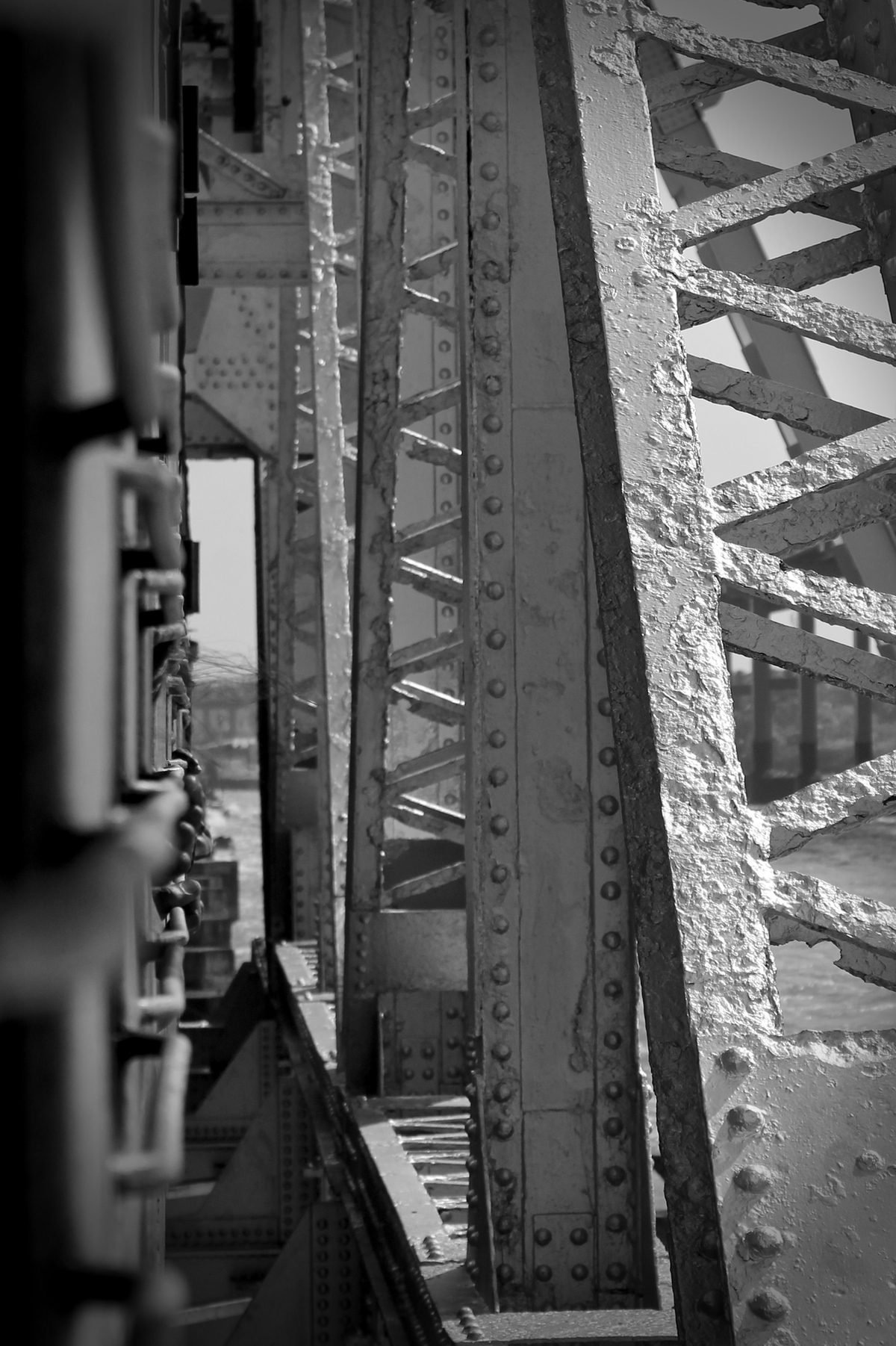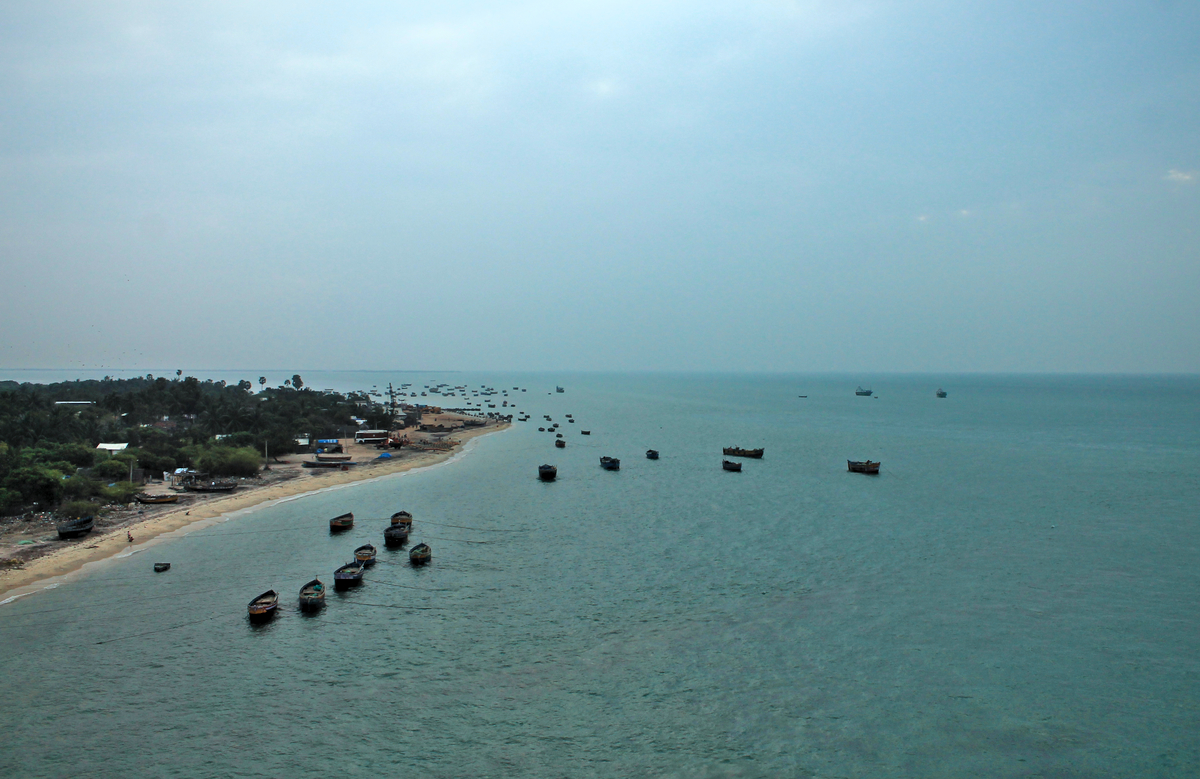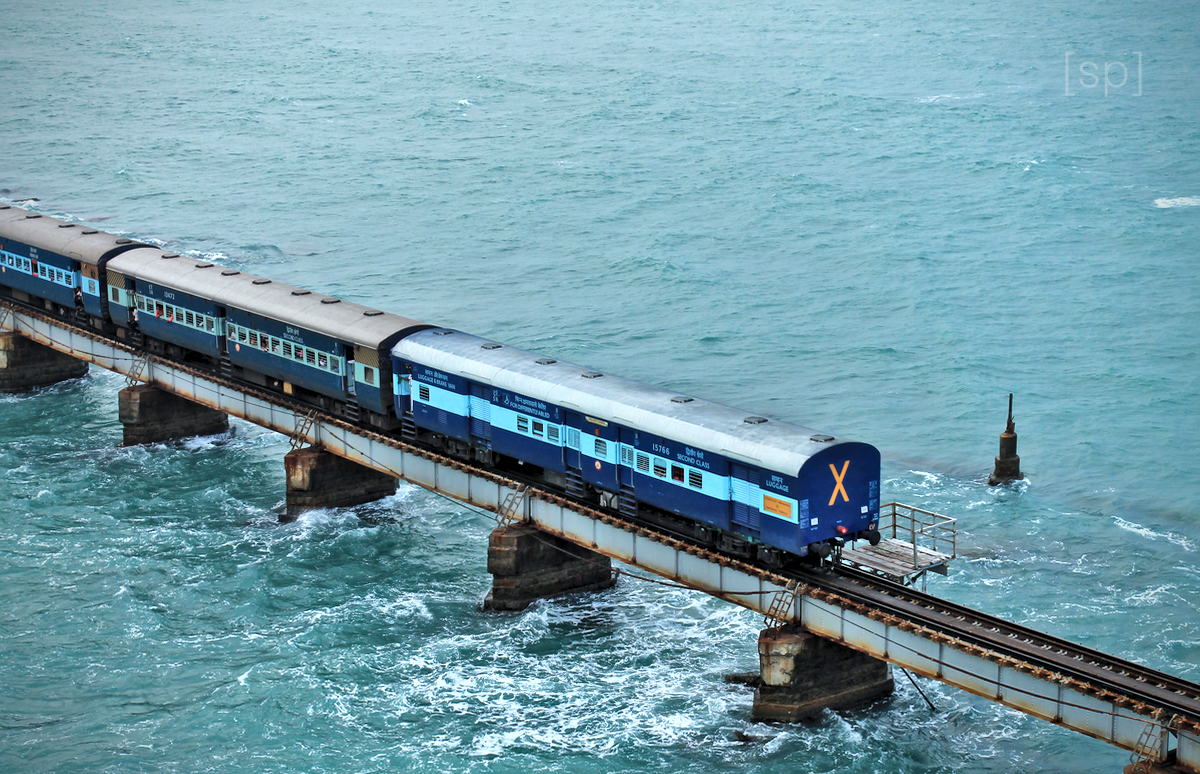Scribbled notes from the sea coast
“That’s the difference with trains, especially the open window ones, I suppose. You can be physically within, yet mentally in your own world throughout the journey - the breeze, the rhythm and the fleeting sights acting as a natural barrier to being fixed to a place. On the contrary there’s too much “noise” (in the sense of a signal to noise ratio), too much interaction with flights - that by the time your own train of thought has left the chaos, you’re interrupted by a sickeningly sweet voice hastening it back into the economy-class interiors. Asking you whether you’d like peanuts or pretzels with your coke”
My own little musings are interrupted by Sabarimalai anna discussing details of the GATE exam with a rather enthusiastic little gentleman next to him. There’s a steady breeze going about its business and the coach is filled with the smell of a fresh morning bath and copious amounts of vibhuti. And casual, delightful conversation all around. For by the time we were an hour into the journey, familiar faces had been discovered, unfamiliar ones befriended and threads of conversation firmly established.
585 kms, mulls a distance marker. From Chennai Egmore, I suppose. We’re on a not-too spectacular section of track right now (having marched off stubbornly south east of Madurai a few hours ago), across which we now leisurely amble at speeds just shy of 65 kmph. The loco is mostly idling and cruising in first or second notch, going up to third for a few minutes before hastily climbing back down. All the while, the V20 beats echo off the odd farm-shed, level crossing gate or a clump of palm trees.
There are signs of a very generous retreating monsoon everywhere. Even the kikar shrubs are extremely verdant, looking more out of a European riverbank than an invasive shrub in a seasonal south Indian plain. We cross a canal, passing over it with an uncharacteristic thud, and watch it end disappointingly in a small pond under a clump of trees. 60 kmph is perfect, almost dream like in this setting.
Near the 598 km marker, the serpentine restriction ends and we pull into Sattirakkudi. It’s a fairly standard affair - an uncharacteristic 3 platforms in the middle of nowhere. Since there’s obviously no dearth of space, the loop line carries on for a bit beside us before finally shooting forth a turnout to the mainline and giving up the ghost in a block of concrete. Seconds later, the opposite home signal is passed and we are back to being the unassuming single line, diesel track. The DP3A adds a few notches, does its regular transition and that’s that. Another station despatched.
A late morning squatter gets up in reverence to the train, his bicycle parked a few yards away near the dirt road.
A strip of permanent way appears to the right of us and continues on for a while beside us. Track doubling? I wonder. On second thoughts, no. The ballast looks pretty old and I wonder if thats the old metre-gauge alignment. My suspicion is confirmed when we cross a small river or stream of some sort, and concrete pillars stand where the same alignment would have continued across it with. I catch some name that looks like Pallavi as the board whizzes past. (Some online digging later, the bridge appears to be over one of many streams that branch from or feed into the Vaigai at this point. The pillars are also visible in the satellite image.)
KM 611: there’s a bit of honking and we hurriedly slow down to a crawl. Peeking out, the reason is clear. A man stands with a green flag, waving us forward - A temporary speed restriction for track work, no doubt informed a priori to the drivers, enforced in the simplest way possible. Our tail clears it and there’s probably some cursory word spoken into the guard’s walkie talkie. The chugging resumes and we start slowly eating up the miles again.
A few minutes later the scenery quickly regresses as pigs, ditches, pink buildings and that familiar smell of a small TN town enter the scene. A loop line promptly branches off, and by the last yards of KM 614 we pull into Ramanathapuram to the weary sighing of brakes. Ah yes let’s see: a somewhat tree-lined platform, a foot-over-bridge and an cream-coloured building with barred windows. The standard Southern Railway newly-gauge-converted-station starter pack. A pretty large crowd alights, and it’s almost a five minute stop. As the din of the fans inside the coach slowly drown in loud calls of Kadalai Kadalaiii, there sound two sharp rings on a rail, and we’re off. The same moody trundle continues for a bit - aadu panni kozhi - till the roads turn muddy, things get a little less nouveau-urban, and the houses start look slightly nicer. A thatha holds his grand daughter and she waves at the train.
*****
Km 641. Land is more sandy but there’s a lot of water logged here and there. My estimation of the strength of the latest retreating monsoon grows. Lots of short palm trees. Plenty of greenery.
A short halt at Mandapam camp. By this time, the terrain is completely covered in sand, and the smell of the sea unabashedly follows us everywhere. A short while later we pull into Mandapam. I can see the see in the distance, and we pull closer to it as we leave Mandapam behind. Finally, on a right-handed curve, I spot the sea ahead as we slow down to a crawl. It’s time for the bridge.

*****
A short while later, I am deposited along with a few hundred pilgrims at a hot and sultry Rameswaram station. It doesn’t take long for the crowd to be quickly consumed by the waiting auto- and taxi-men, and within half an hour a soporific lull descends onto the platforms. The loco has scampered away for a bit of rest, and all is still.

“Everyone goes to sleep in the afternoon,” complained Suraj. “My father lies down as soon as he’s had his lunch.” “Well, the animals also rest in the heat of the day. It is only the tribe of boys who cannot, or will not, rest.” Sunder Singh placed a large banana-leaf over his face to keep away the flies, and was soon snoring gently. (Ruskin Bond, Tiger in the Tunnel)
*****
Later that evening, I’m struggling to keep my hair straight in the wind, standing on the towering road bridge that overlooks the Pamban railway bridge. We had passed by what was going to be Dr. Abdul Kalam’s final resting place on the way, and the serene view of the sea stirred up a long train of thought. The sun had long vanished behind the overcast sky, and the water was slowly merging into it in the distance. A few boats lay near the island, seeming like sea shells in a shallow beach from the altitude the road bridge afforded.

A little after five, I cross over to where I have a view of the railway bridge, so I can catch the Boat Mail making her way across the sea to the mainland. Meanwhile, Anil is (virtually) providing me company in welcoming the Mail onto the bridge. It’s due to leave Pamban station at a quarter past five, and at five twenty there is no sign of the train. It has left Pamban, Anil reassures me, consulting live train status sitting at home. He is clearly enjoying this as much as I am. After what seems to be an interminable wait, I catch the locomotive that brought me here in the morning, slowly appear from behind the coconut trees. Slowly, she makes her way down the piers, through the cantilever portion and onto the other side.

*****
Pamban station - a small, non descript one that is teeming with commuters mulling about waiting for the passenger back to Madurai. There’s a generous amount of time before it’s due, and I use that to walk a little farther up the track to see if there remain any signs of the line that once went to Dhanishkodi from the station. I tell myself to be not optimistic, for a cyclone destroyed it and a subsequent gauge conversion would have wiped out all traces of the line from the vicinity of the station. There’s a level crossing, and the tracks turn sharply left shortly after that. A clearing in the thorny bushes nearby, and a sand-path leading straight through it belie signs of what could have once been the permanent way to land’s end in Dhanushkodi. There’s nobody around to talk to, and the passenger is due in a short while, so I walk back to the station. There’s litter all over the tracks, mosquitoes invading the air and the beedi smoke is making everything rather unpleasant. I wander about a bit, trying to get to the end of the platform where there would be fewer people, and a collection of rusted objects in a niche catch my attention. A weighing scale and some pails holding sand for use in case of a fire. Perhaps from the metre gauge era, I hope silently. It is too dark to read the markings on the weighing scale. Time to walk back to civilisation. The tube lights come on reluctantly after the light falls uncomfortably below reasonable limits, and soon the the murmur grows louder. Amidst this, there’s a short horn from the other end and the train pulls in.
There are brooding evenings and there are brooding evenings where you leave a place by train and cross the sea slowly. I climb in, find an empty coach and put my feet up. The loco has the exhaust notes of an annoyed and impatient pressure cooker.
A sign announces the imposition of a 15kmph speed limit and the arrival of Br. No. 346 - the Pamban Bridge, and we commence our slow and painful trundle back to the peninsula.